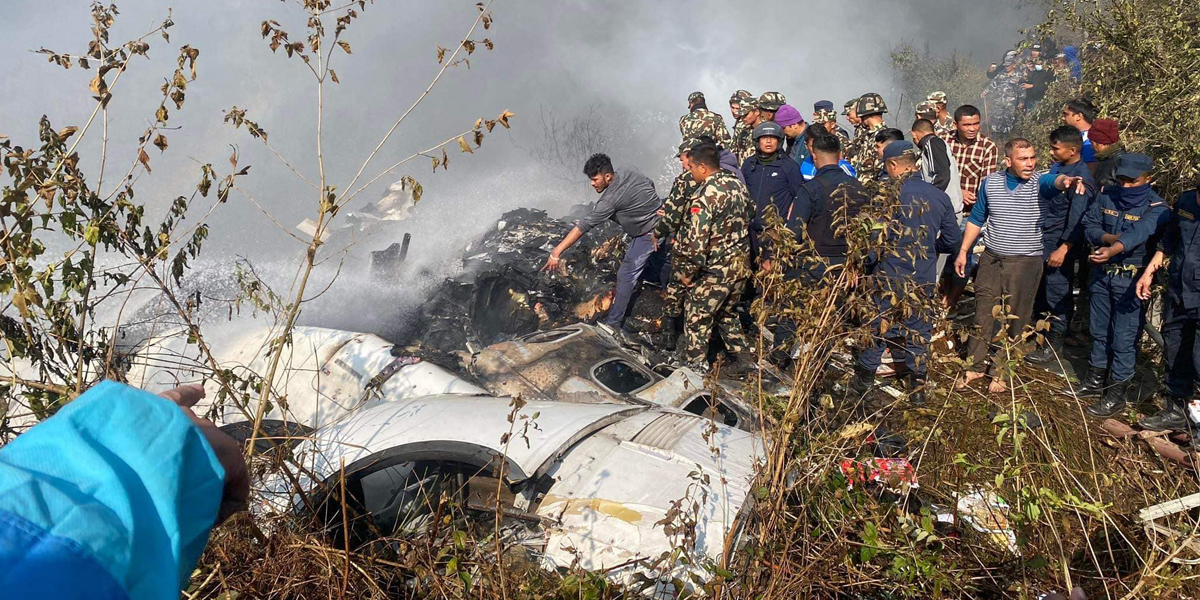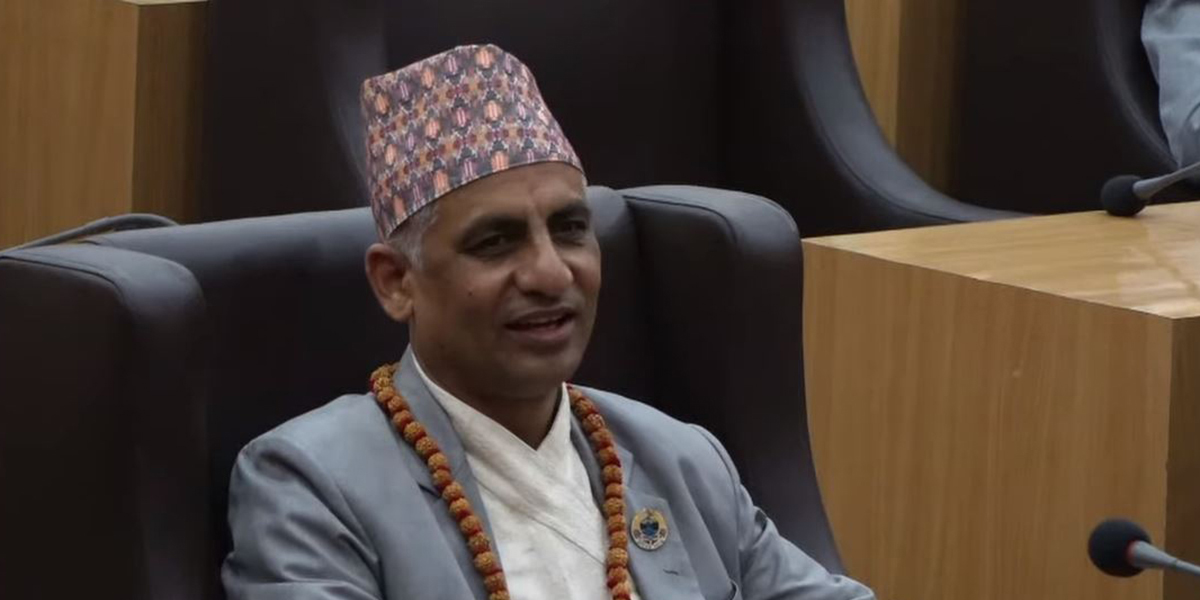
KATHMANDU: The pilot flying (PF) of the Yeti Airlines Flight 691 that crashed near Pokhara Airport on January 15 had said before the crash that there was no power from the aircraft’s engines, a preliminary investigation report said on Wednesday.
The ATR 72-500 aircraft of Yeti Airlines was carrying 72 passengers, including four crew members. Rescue workers have recovered 71 bodies from the crash site with one unaccounted person presumed to be dead.
“During the first contact with Pokhara tower, the Air Traffic Controller (ATC) assigned the Runway 30 to land. But during the later phases of flight, the crew requested and received clearance from ATC to land on Runway 12,” the report states.
The Aircraft Accident Investigation Commission has said in its report that its investigation will now focus on three aspects – the circumstances under which both propellers went into the feathered condition, human factors, and visual approach procedures into Pokhara International Airport including simultaneous operation of both national and international airports.
Likewise, it has recommended that the CAAN conduct a comprehensive study to determine the appropriate flight path that allows the criteria for a stabilized visual approach to be met, taking into consideration of the simultaneous operations at both the old and new airports before resuming visual approach on Runway 12
of the new airport.
The flight data recorder and cockpit voice recorder of the ATR-500 aircraft were analyzed at the Transport Safety Investigation Bureau (TSIB), Singapore in the presence of Bureau d’Enquêtes et d’Analyses pour la sécurité de l’Aviation Civile (BEA), France; Transportation Safety Board of Canada (TSB); ATR, aircraft Manufacturer as adviser of BEA; European Aviation Safety Agency (EASA) as adviser of BEA; Pratt & Whitney Canada, Engine Manufacturer as adviser of TSB.
The final six minutes in the cockpit:
10:51:36: The aircraft descended (from 6,500 feet at five miles away from the airport) and joined the downwind track for Runway 12 to the north of the runway. The aircraft was visually identified by ATC during the approach.
10:56:12: The pilots extended the flaps to the 15 degrees position and selected the landing gears lever to the down position. The take-off (TO) setting was selected on power management panel.
10:56:27: The PF disengaged the Autopilot System (AP) and then called for “FLAPS 30” at 10:56:32, and the PM (pilot moniotring) replied, “Flaps 30 and descending”. The flight data recorder (FDR) data did not record any flap surface movement at that time. Instead, the propeller rotation speed of both engines decreased, according to the report.
10:57:07: When the ATC gave the clearance for landing, the PF mentioned twice that there was no power coming from the engines.
10:57:18: The PF handed over control of the aircraft to the PM at 10:57:18.
10:57:20: The PM (who was previously the PF) repeated again that there was no power from the engines.
10:57:24: When the aircraft was at 311 feet above ground level, the stick shaker was activated warning the crew that the aircraft Angle of Attack
(AoA) increased up to the stick shaker threshold.
10:57:26: A second sequence of stick shaker warning was activated when the aircraft banked towards the left abruptly.
10:57:32: Sound of impact was heard in the CVR. The FDR and CVR stopped recording at 10:57:33 and 10:57:35 respectively.
10:57:33: Flight data recorder (FDR) stops recording
10:57:35: Cockpit voice recorder (CVR) stops recording
Full Report:

 Himal Press
Himal Press 













